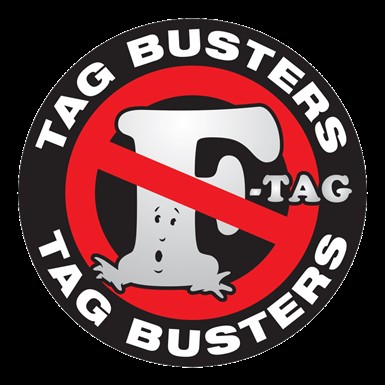Submitted by Jon Anderson, Senior Therapy Resource
Jennifer Henderson, OTR, DOR, Parklane West, San Antonio, TX
Jennifer Henderson, OTR, DOR at Parklane West, has been with our organization since 2016. Jennifer started out her career as a high school math teacher and then later decided to become an OT because she felt a calling to help older adults. During the Legend acquisition, she came over as a DOR from Sonterra Healthcare Center in San Antonio, Texas, and later decided to take a short break and become a full-time treating OT who helped several of our facilities in the San Antonio area. However, another opportunity landed in our laps with Parklane West, and Jennifer stepped up and once again became a DOR leading Parklane Therapy. Parklane started with a sleepy therapy program with only a few therapists, and today Jennifer has grown it to over 20 therapists/therapist assistants! Jennifer launched and trailblazed the Outpatient Therapy Program at Parklane before Outpatient was even a focus for the organization, and she has routinely mentored new DORs and helped other affiliates launch their outpatient programs. Jennifer has a passion for LTC programming and has worked with her team to launch our award-winning Abilities Care Approach dementia program with outstanding results impacting the facilities QMs and annual survey. Parklane is routinely and consistently in the top 1/3 of all therapy metrics within Keystone and has maintained a 5-star rating with QMs throughout the most recent year. Congrats, Jennifer, for reaching CTO!
Casey Murphy, PT, DOR, Healthcare Resort of Plano, TX
Casey has been with Keystone-affiliated facilities for a little over four years. He began his journey as a field therapy resource and moved into a DOR/resource hybrid role at the Healthcare Resort of Plano when an urgent need emerged. As he saw the potential and needs of the facility grow, he made the decision to solely take on the DOR role, and the results the facility has seen since he made this decision have been phenomenal. Casey’s development of systems for PDPM and Managed Care have helped the facility effectively manage their skilled short-term patients, and he frequently wears a Case Manager hat among many others. Casey’s embracement of Outpatient programming is what has really set them afire! What started out as just a few patients here and there has turned into an outpatient center that serves the entire community, and a viable line of business for HCR Plano. Casey takes the leadership development component of his role very seriously. He has started training multiple therapists in his facility on culture, financial and NetHealth basics, taking the time to help all those who express an interest in growth. He models Intelligent Risk Taking with his own professional development. Casey became certified in Geriatric Exercise, is Lymphedema certified, and is currently an NCS/EMG resident. Casey has presented on multiple market and global calls about outpatient development and leadership development. Even with his many hats, he takes the time to individually answer all questions from other therapists and DORs about outpatient and has helped many facilities in Keystone become successful. He is a true owner of his program, his team, and their results. Congratulations, Casey, for reaching CTO!
Quin Hall, SLP, DOR, Legend Oaks Healthcare, Paris, TX
Quin Hall started as a treating SLP at Legends Ennis, in Ennis, Texas, where he took their speech program to new heights in a few short months. He took the opportunity as the Director of Rehabilitation at Legend Oaks Healthcare and Rehabilitation in Paris, Texas, in November 2020. At the time he joined the team, there were only five therapists, and the department was struggling with culture, programming, and metrics. Now they are 13 strong and growing while being fiercely competitive in metrics and mentoring other buildings in how to recreate some of their programs. The culture that Quin has created in the Therapy department has spread throughout the entire facility. Therapy has truly become the heart of the building. He embraces CAPLICO by celebrating his team daily, loving them well, and pushing them to become the best versions of themselves. He also is the first to step up and take ownership when there are growth opportunities for himself. Quin has reached out to many of his cluster and market partners to share his secrets to the magic they have created with thriving group programs, a phenomenal long-term programming menu, and an incredibly strong speech program. You may have also seen him on the FlagPOST sharing speech group ideas, featured in the speech newsletter, or on the Long-Term Care Think Tank sharing about groups. Quin has taken on students and interns to both feed his staffing needs and pour back into his profession. He has an infectious spirit that keeps his team and facility motivated and excited to work. Congratulations, Quin, for reaching CTO!
Monica Sharp, PTA, TPM, Mesa Springs, Abilene, TX
Monica Sharp joined Wisteria Place in Abilene, Texas in October 2015 following a role in Fort Worth with pediatrics. She returned to Abilene to be near family and has been a part of our Keystone family in Abilene ever since. She jumped right in as a treating therapist assistant and embodied the culture at Wisteria to make a difference in the lives of our residents there. When the opportunity for a therapy program manager opened up at nearby Mesa Springs, Monica seized the moment and has been the TPM there since August 2018. When she took the helm of the team, there were seven therapists in the department. She has grown the team to 12 therapists and has led them to the top in the state for many therapy metrics. Under her leadership, they have significantly improved their long-term care programming, and the positive culture is apparent. Monica has worked closely with the ED and DON to lead Mesa Springs with zero-deficiency surveys, significant upswings in culture and care, and an overall sense of love throughout the building. Monica has demonstrated significant self-growth this year as well, looking inward to improve metrics and take ownership during difficult times. She helped the facility when the ice storm of 2021 left the building without power and water and has worked in Housekeeping and Nursing when COVID outbreaks threatened care. Monica has recently joined the managed care committee and has reached out to assist with education with her cluster and market partners. She has become a true owner of her department and their metrics while leading others to do the same. Congratulations, Monica, for reaching CTO!
Megan Wickliff, OTR, DOR, The Phoenix Post Acute Care, Texas City, TX
Allow me to introduce you to Megan Wickliff. There is no way to truly capture the true greatness of Megan within this paragraph, but I hope to provide a level of insight into the caliber of leadership she possesses. Megan has been the DOR of the Phoenix Healthcare and Rehab facility for over five years. This facility has come through many challenges, and Megan has stoically remained the pillar of strength for so many. She has made it her mission to make sure Therapy is never a contributor to the effects of having a silo. She crosses the invisible lines of duties and is always readily available to lend a hand in the Nursing, Social Services, Marketing, and Activities departments. There have been long periods of time that the facility may have been without an IDT, so Megan would take charge of leading meetings and carrying out any level of follow-up that was needed. To know Megan is to know a woman who does not have to say many words nor stand under the spotlight for her impact to be noticed. Her sheer level of humility and actionable service is beyond admirable. Megan is currently working on her Ph.D., as she has such a strong passion for learning and sharpening her level of leadership. I would be remiss to not mention that even though Megan leads the charge for several duties within her facility, she still has metrics worth bragging about. Congratulations, Megan, on receiving CTO; you are more than deserving of such a high honor!
Shayla Goode, SLP, DOR, Copperfield Healthcare & Rehabilitation, Houston, TX
Shayla Goode has been at the Copperfield facility for over four years. She first began her role as a staff SLP, shortly after she transitioned into the role of ADOR. Shayla would playfully say that she didn’t think she could ever be ready to fill a role as the DOR. The time came, and with a gentle push, Shayla accepted the position of DOR at the Copperfield facility. For those not familiar with this facility, I must share that they have been the facility to watch when it comes to managed care penetration in the Keystone East market. They have been the drivers for navigating efficient ways to manage the needs of those patients. Shayla has played a pivotal role in building such a strong foundational relationship with each of her case managers. She has led the charge of educating not only her Rehab team, but also the IDT about how to be quality partners with our case managers. I want to make sure I don’t diminish her other incredible accomplishments such as being a ranked department in lowest CPM, highest PNSD, highest productivity and consistently finishing in the top 4 for Keystone East Outpatient revenue. What speaks even louder than the metrics that I shared is the level of tenure she has with her Rehab team. Her team has continued to grow, and with great pride she shares that her turnover rate is incredibly low. Shayla knows the positive effects of leadership development, and that was a major goal of hers in 2021. She truly took the time to grow her ADOR, and she has redesigned the role to reflect the vision that she has for the future of the department. This is only the beginning of Shayla’s journey, and becoming CTO is an honor that is very well-deserved.








